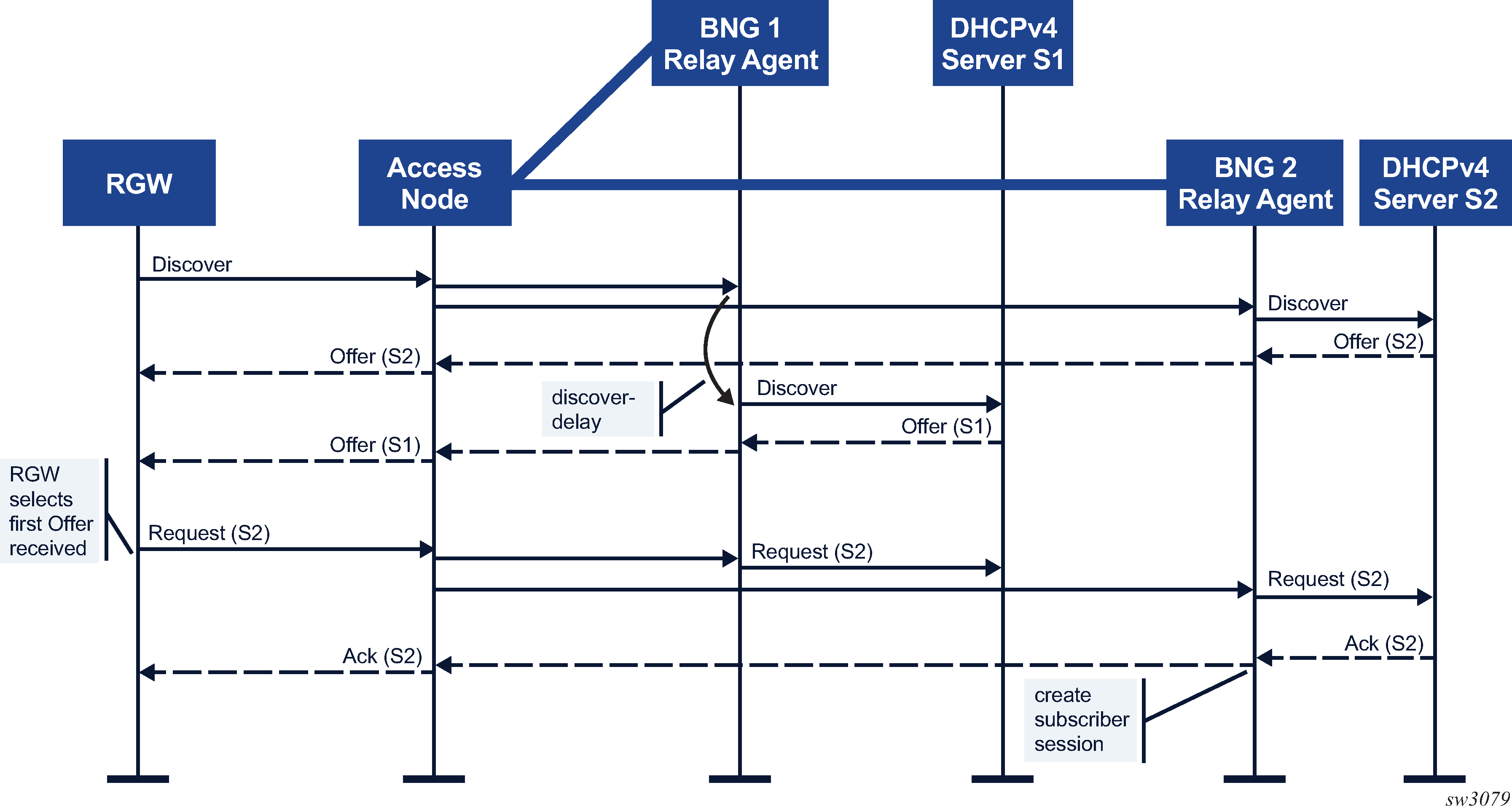When multiple DHCP servers in the network offer an IP address or prefix, the DCHP client must choose a server from which to request configuration parameters. In some network designs, such as a stateless multi-chassis redundant BNG deployment, the load balancing of IPoE subscriber sessions can be optimized by influencing the server selection at the DHCP relay. This is similar to using a pado-delay for PPPoE subscriber sessions. See Figure: DHCPv4 relay offer selection parameters.

In Figure: DHCPv4 relay offer selection parameters, the DHCPv4 client on the RGW connects and broadcasts a DHCPv4 Discover message to obtain an IP configuration. Both the BNG 1 and BNG 2 relay agents receive the Discover message with the Layer 2 aggregation network between the Access Node and the BNGs. The DHCP Relay Agent function on BNG 1 is configured to delay the Discover message before sending it to the DHCPv4 Server S1, while the DHCP Relay Agent function on BNG 2 immediately forwards the Discover message to DHCPv4 server S2. As a result, the DHCP Offer from DHCPv4 Server S2 reaches the DHCP client first. The client selects the Offer from DHCP Server S2 and broadcasts a DHCP Request with the server identifier option set to Server S2. The BNG1 and BNG2 relay agents both forward the Request to their DHCP servers. DHCPv4 Server S1 ignores the Request targeted to server S2. DHCPv4 Server S2 Acknowledges the lease. The subscriber session is created on BNG 2 and the DHCPv4 Ack is sent to the RGW.
Similar results can be achieved for DHCPv6 clients by delaying the DHCPv6 Solicit message or by inserting a Preference Option in the DHCPv6 Advertise message to the client.